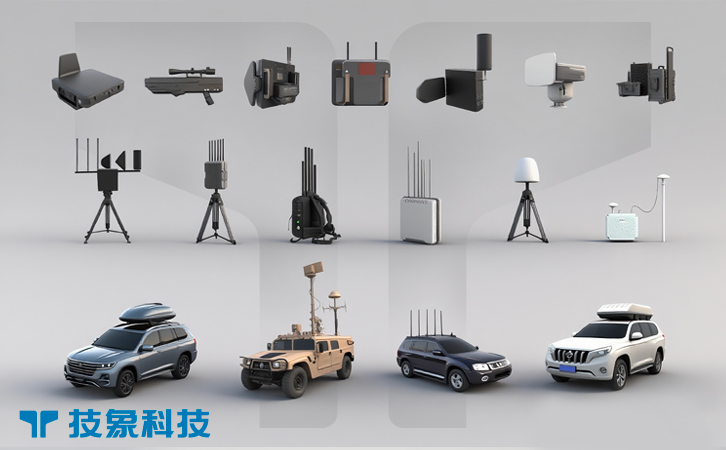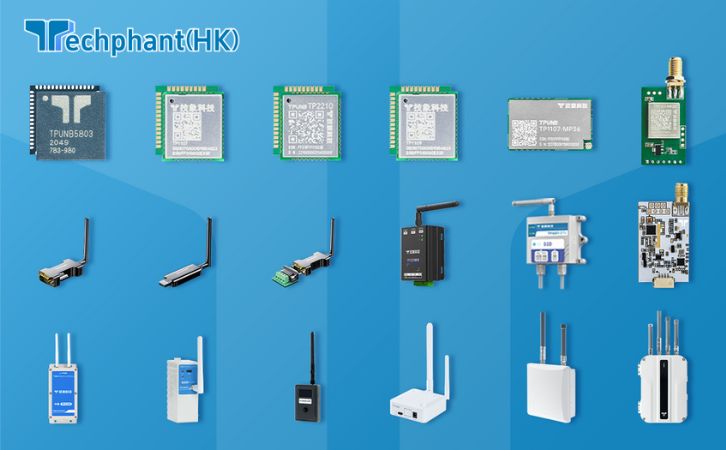Anti-drone technology, also termed counter-Unmanned Aircraft Systems (C-UAS), encompasses integrated systems designed to detect, identify, track, and neutralize unauthorized or malicious drones. These technologies address escalating security, privacy, and safety risks posed by drone misuse in military and civilian domains. Below is a detailed exploration of its definition, mechanisms, applications, and real-world implementations.
1. Definition and Core Objectives

Anti-drone technology refers to systems that mitigate threats from drones used for espionage, smuggling, attacks, or airspace violations. It combines detection sensors (radar, RF, optical) and countermeasures (jamming, spoofing, kinetic interception) to protect critical infrastructure, public spaces, and military assets . The primary goals are:
- Prevent Unauthorized Surveillance: Block drones from gathering sensitive information.
- Ensure Public Safety: Stop drones from disrupting airports, events, or transport systems.
- Neutralize Hostile Threats: Defend against weaponized drones in conflict zones.
2. Technical Components and Functionality
Anti-drone systems operate through a multi-layered process:
A. Detection and Identification
Radar Systems: Use electromagnetic waves to detect drones’ size, distance, and velocity. Advanced phased-array radars (e.g., NovoQuad) excel at tracking small, low-altitude drones with minimal false alarms .
RF Sensors: Monitor radio frequencies unique to drone-controller communications, enabling identification even in cluttered environments .
Optical/Acoustic Sensors: Cameras and microphones provide visual confirmation and analyze propeller sounds for classification .
AI Integration: Machine learning algorithms process multi-sensor data to distinguish drones from birds, predict flight paths, and reduce false positives .
B. Countermeasure Technologie
| Method | Mechanism | Use Cases |
|---|---|---|
| Electronic Jamming | Disrupts drone-controller links via RF signals, forcing land/return | Civilian events, airports |
| GPS Spoofing | Feeds false coordinates to hijack navigation | Military bases, borders |
| Laser Systems | High-energy beams disable electronics or propulsion | High-value targets, kinetic defense |
| Kinetic Interceptors | Nets, projectiles, or interceptor drones physically capture/destroy drones | Urban areas, conflict zones |
| Directed-Energy Weapons | Electromagnetic pulses (EMP) disable multiple drones instantly | Large-scale security |
3. Key Applications
Anti-drone systems are deployed across sectors:
Military/Defense: Protect bases, naval ships, and troops from reconnaissance or attacks. Examples:
Ukraine Conflict: Electronic warfare systems jammed Russian drones, reducing successful strikes .
Middle East Operations: Laser weapons and missiles neutralized weaponized drones .
Critical Infrastructure: Safeguard power plants, communication hubs, and oil refineries from sabotage .
Aviation Security: Deployed at airports (e.g., London Heathrow) to prevent drone incursions near runways .
Public Events: Used during sports events (e.g., Olympics) and concerts to ensure crowd safety .
Border Security: Monitor and intercept drones smuggling contraband or conducting espionage .
4. Real-World Deployments
Airport Systems: Major airports use integrated radar-RF systems (e.g., AARTS) to detect and jam drones within 3–5 km, reducing flight disruptions .
Military Hard-Kill Solutions: India’s SZMID system combines jamming and net guns to secure borders with China, while Russia employs “bubble” defenses around bases using EW and lasers .
Law Enforcement: Police use handheld anti-drone guns (e.g., DroneGun) at protests to non-lethally disable drones violating privacy .
5. Challenges and Future Trends
Limitations: Jamming risks collateral interference; kinetic methods require precision. Weather and drone swarms complicate neutralization .
Innovations:
AI-Driven Autonomy: Real-time threat assessment and adaptive responses to drone swarms .
Drone-vs-Drone Tactics: Counter-UAVs with nets or jammers for agile interception .
Cybersecurity Integration: Protecting anti-drone networks from hacking .
Market Growth: Projected to reach $8.5 billion by 2024, driven by geopolitical tensions and drone proliferation .
Conclusion
Anti-drone technology is a dynamic, multi-disciplinary field essential for modern security. By merging detection accuracy, diverse countermeasures, and AI-enhanced adaptability, it addresses evolving threats from recreational to weaponized drones. As conflicts and regulations evolve (e.g., FAA restrictions near airports), continuous innovation will define its role in safeguarding global airspace .



